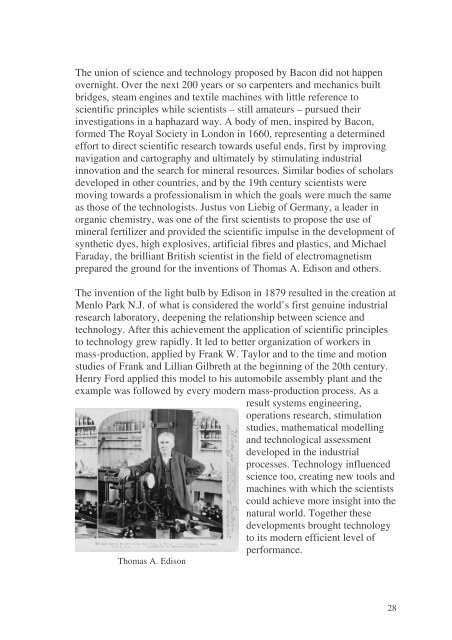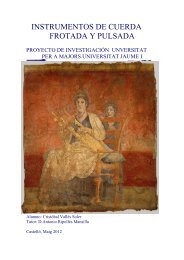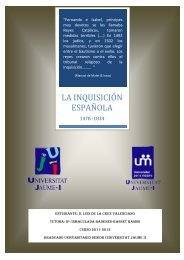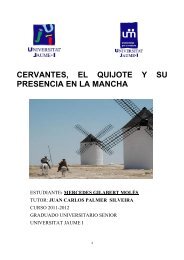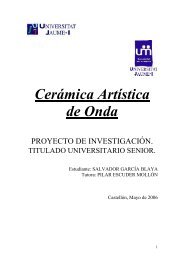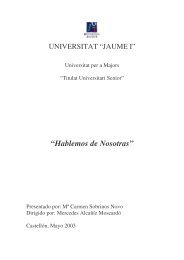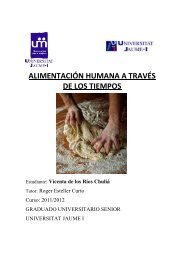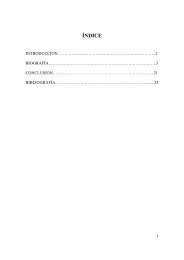The industrial Revolution - Universitat per a Majors
The industrial Revolution - Universitat per a Majors
The industrial Revolution - Universitat per a Majors
Create successful ePaper yourself
Turn your PDF publications into a flip-book with our unique Google optimized e-Paper software.
<strong>The</strong> union of science and technology proposed by Bacon did not happenovernight. Over the next 200 years or so carpenters and mechanics builtbridges, steam engines and textile machines with little reference toscientific principles while scientists – still amateurs – pursued theirinvestigations in a haphazard way. A body of men, inspired by Bacon,formed <strong>The</strong> Royal Society in London in 1660, representing a determinedeffort to direct scientific research towards useful ends, first by improvingnavigation and cartography and ultimately by stimulating <strong>industrial</strong>innovation and the search for mineral resources. Similar bodies of scholarsdeveloped in other countries, and by the 19th century scientists weremoving towards a professionalism in which the goals were much the sameas those of the technologists. Justus von Liebig of Germany, a leader inorganic chemistry, was one of the first scientists to propose the use ofmineral fertilizer and provided the scientific impulse in the development ofsynthetic dyes, high explosives, artificial fibres and plastics, and MichaelFaraday, the brilliant British scientist in the field of electromagnetismprepared the ground for the inventions of Thomas A. Edison and others.<strong>The</strong> invention of the light bulb by Edison in 1879 resulted in the creation atMenlo Park N.J. of what is considered the world’s first genuine <strong>industrial</strong>research laboratory, deepening the relationship between science andtechnology. After this achievement the application of scientific principlesto technology grew rapidly. It led to better organization of workers inmass-production, applied by Frank W. Taylor and to the time and motionstudies of Frank and Lillian Gilbreth at the beginning of the 20th century.Henry Ford applied this model to his automobile assembly plant and theexample was followed by every modern mass-production process. As aresult systems engineering,o<strong>per</strong>ations research, stimulationstudies, mathematical modellingand technological assessmentdeveloped in the <strong>industrial</strong>processes. Technology influencedscience too, creating new tools andmachines with which the scientistscould achieve more insight into thenatural world. Together thesedevelopments brought technologyto its modern efficient level of<strong>per</strong>formance.Thomas A. Edison28


